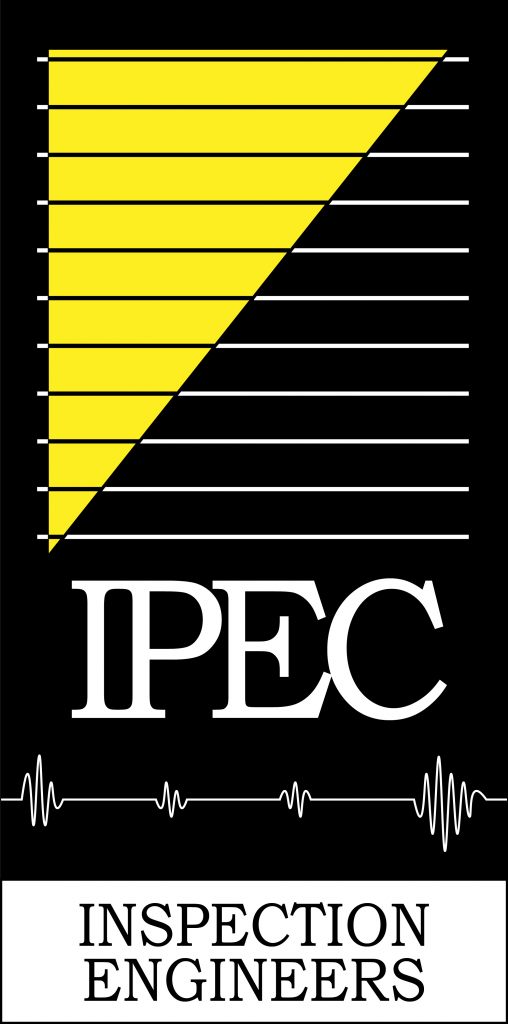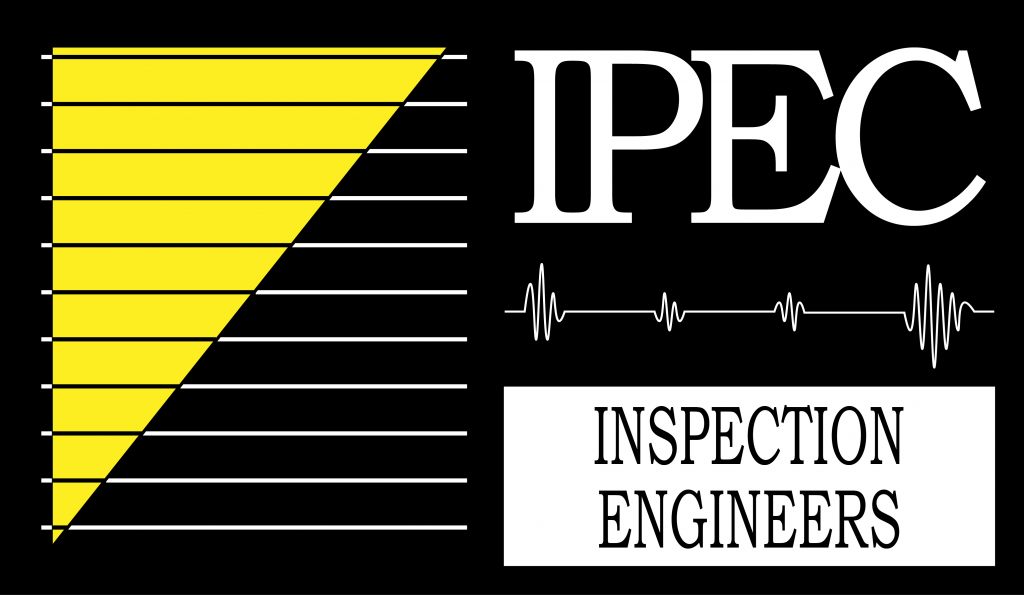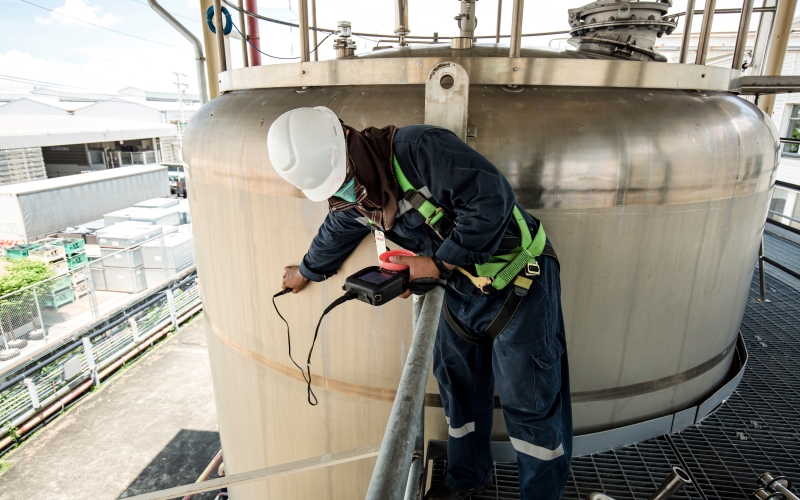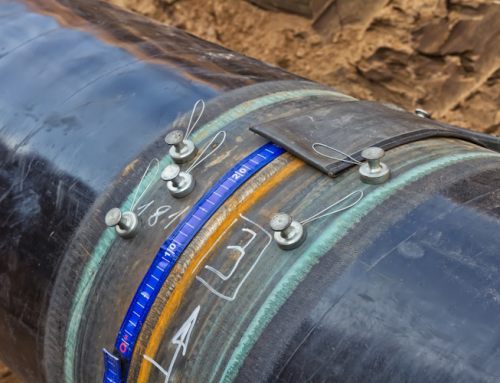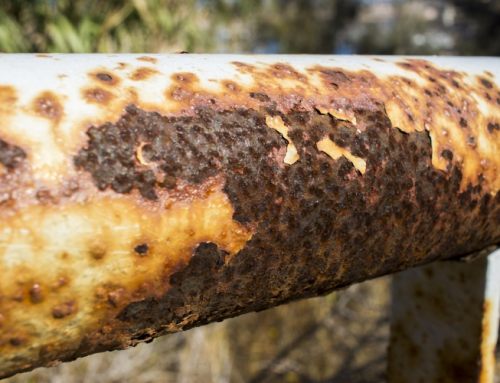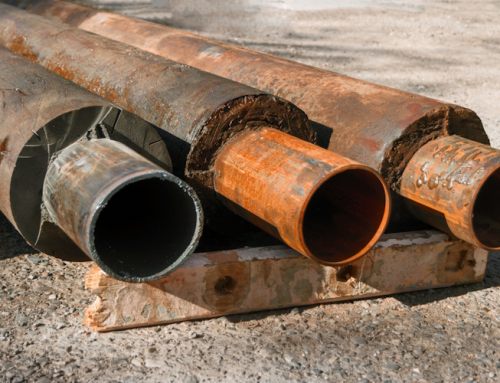In the field of industrial ultrasonic testing, ultrasonic thickness measurement (UTM) is a method of performing non-destructive measurement (gauging) of the local thickness of a solid element (typically made of metal, if using ultrasound testing for industrial purposes) based on the time taken by the ultrasound wave to return to the surface. This type of measurement is typically performed with an ultrasonic thickness gauge.
Ultrasonic waves have been observed to travel through metals at a constant speed characteristic to a given alloy with minor variations due to other factors like temperature. Thus, given this information, called celerity, one can calculate the length of the path traversed by the wave using this formula:
where;
is the thickness of the sample
is the velocity of sound in the given sample
is the traverse time
The formula features division by two because usually the instrumentation emits and records the ultrasound wave on the same side of the sample using the fact that it is reflected on the boundary of the element. Thus, the time corresponds to traversing the sample twice.
(Example below of a Sonatest Wave Ultrasonic Flaw Detector and it’s interactive scan plan)
Thickness Gauge
An ultrasonic thickness gauge is a measuring instrument for the non-destructive investigation of a material’s thickness using ultrasonic waves.
The usage of an ultrasonic thickness gauge for non-destructive testing to check material properties such as thickness measurement, is regular in all areas of industrial measurements. The ability to gauge thickness measurement without requiring access to both sides of the test piece, offers this technology a multitude of possible applications. Paint thickness gauges, ultrasonic coating thickness gauges, digital thickness gauges and many more options are available to test plastics, glass, ceramics, metal and other materials. Along with coating thickness, it is widely being used for thicknesses of glass, wood, and plastics and also serves as major testing equipment in the corrosion industry.
A rugged ultrasonic thickness gauge determines sample thickness by measuring the amount of time it takes for sound to traverse from the transducer through the material to the back end of a part and back. The ultrasonic thickness gauge then calculates the data based on the speed of the sound through the tested sample.
There are two types of transducers that can be used as an ultrasonic thickness gauge. These sensors are piezoelectric and EMAT sensors. Both transducer types emit sound waves into the material when excited. Typically these transducers use a predetermined frequency, however certain thickness gauges allow for frequency tuning in order to inspect a wider range of material. A standard frequency used by an ultrasonic thickness gauge is 5 MHz.
Some ultrasonic coating thickness gauges require that a couplant in gel, paste or liquid format be used to eliminate gaps between the transducer and the test piece. One common couplant is propylene glycol, but there are many other options which can be substituted.
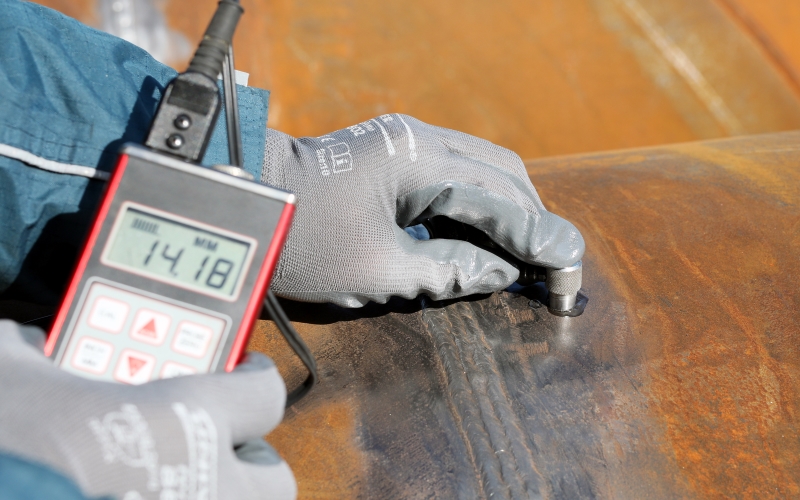
(Ultrasonic Thickness Measurement of a Carbon Steel Butt Weld)
Typical Usage
UTM is frequently used to monitor metal thickness or weld quality in industrial settings such as mining. NDE technicians equipped with portable UTM probes reach steel plating in sides, tanks, decks and the superstructure. They can read its thickness by simply touching the steel with the measurement head (transducer). Contact is usually assured by first removing visible corrosion scale and then applying petroleum jelly or another couplant before pressing the probe against metal. However, when UTM is used with an electromagnetic acoustic transducer the use of couplant is not required. These testing methods are used to inspect metal to determine quality and safety without destroying or compromising its integrity.
The techniques and technologies associated with UTM are closely related to the use of ultrasound in other contexts, such as the various other industrial ultrasonic measurements, as well as medical ultrasonography and preclinical imaging micro-ultrasound. UTM technology combined with wireless data transfer is now being used by some companies to monitor live the thickness of metals in transfer chutes.
Advantages
- Non-destructive technique
- Does not require access to both sides of the sample
- Can be engineered to cope with coatings, linings, etc.
- Good accuracy (0.1 mm and less) can be achieved using standard timing techniques
- Can be easily deployed, does not require laboratory conditions
- Relatively cheap equipment
- No need to remove the coating of the metal.
Disadvantages
- Usually requires calibration for each material
- Requires good contact with the material
- Cannot take measurement over rust
- Requires coupling material between the measured surface and the probe.
- Interpretation needs experience
Source/Credit: Wikipedia/Ultrasonic_thickness_measurement
Author: James Murphy, Operations Manger of IPEC Inspection Ltd.
